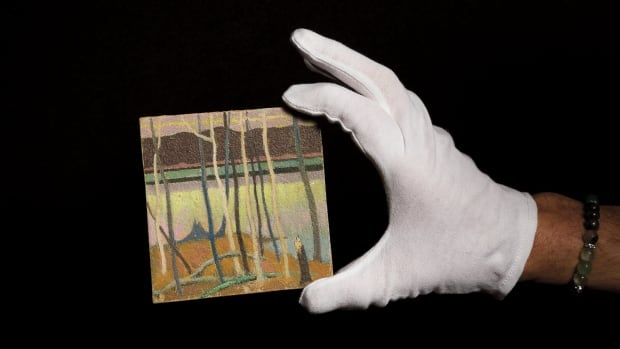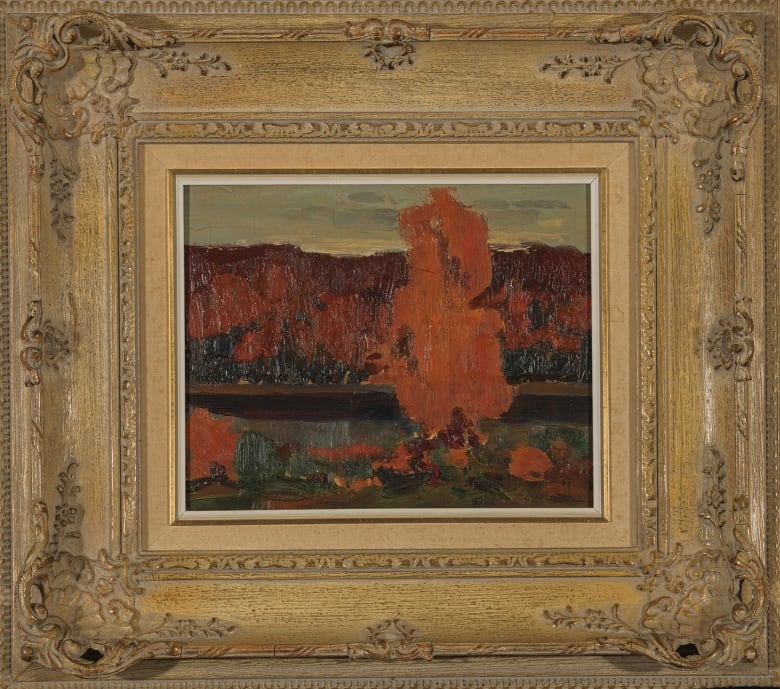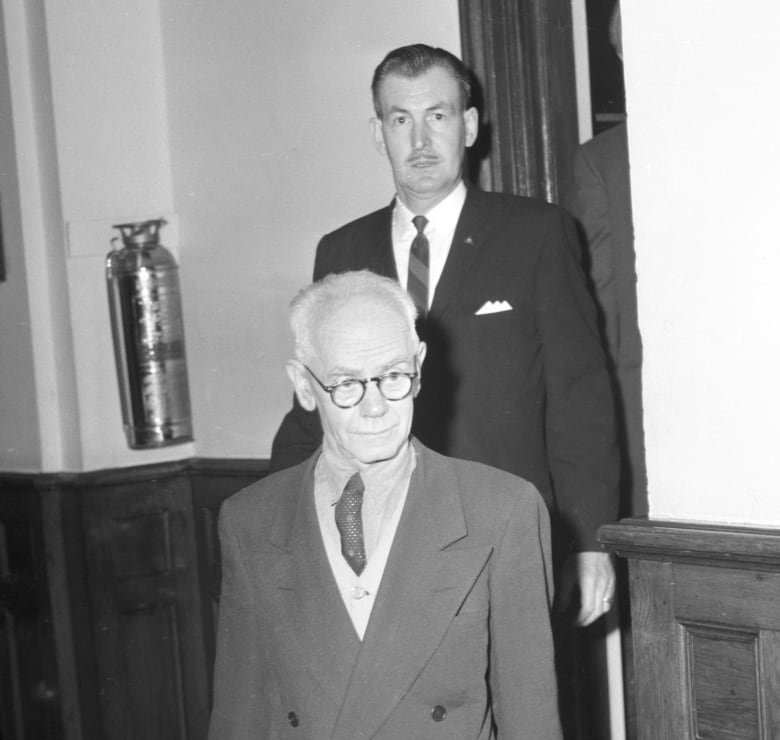
It was just another rainy Saturday when art historian Jon S. Dellandrea received a phone call from a Toronto art dealer about a box of “mysterious things at the edge of the art world.”
“Here’s this box full of papers and personal writing and clippings from the newspapers, and [a] person’s death certificate and articles from describing the art fraud case — and [I’ve] not the foggiest clue who this person was.,” he told The Current guest host Mark Kelley.
Dellandrea initially turned the box down, but was convinced by his wife to take the project on.
That decision led him down a path to investigate a painter named William Firth MacGregor and his forgeries of paintings by Group of Seven artists, like A.Y. Jackson, and others, that, in part, defined the great Canadian art fraud case of the 1960s.
First identified by Russell Harper, the National Gallery of Canada’s chief curator of Canadian art, the case captured national media attention from 1962 to 1964.
It culminated in a dramatic Toronto court case that saw Haynes Art Gallery owner Leslie W. Lewis and art dealer Neil Sharkey convicted of fraud and sentenced to prison.

Sixty years later, that case is the subject of Dellandrea’s latest book, The Great Canadian Art Fraud Case: The Group of Seven & Tom Thomson Forgeries.
Many of the forgeries are likely still hanging on someone’s wall today, but their current whereabouts are unknown, Dellandrea said.
“[The forgeries] totally undermined the art market,” he said. “You have no confidence that the A.Y. Jackson painting that you just took your hard-saved money and bought for $1,000 was worth $1,000 or was worth the $20 that the frame cost.”
An unfortunate painter
Although Dellandrea didn’t know who MacGregor was at the time, he found that the painter was one of the key characters in this.
He had immigrated to Canada from Scotland in 1925, and was a “brilliantly trained artist,” according to Dellandrea, and worked at a Vancouver school with Group of Seven member Fred Varley for a period of time.
Dellandrea said he disappeared for a few decades after his initial success, but re-emerged in the 1960s by creating knock-off pieces for an art dealer named Neil Sharkey.
“He thought [they] were just being given away or sold as souvenirs or something,” Dellandrea said. “Then he finds himself at the centre of the art fraud.”
Sharkey had framed some of MacGregor’s earlier original works before the scheme. He would bring the unassuming MacGregor books like A.Y. Jackson’s A Painter’s Country, and get him to make “wonderful little copies of the paintings,” said Dellandrea.
Sharkey would then dress them up with fancy frames and brass plaques, “rub a little dirt on the back to make them look older, and then run them through auction at board price,” he added.

MacGregor didn’t get a fair share either. Dellandrea said Sharkey paid MacGregor $5 for each copy, while the forgery would sell anywhere between $950 and $1,500 at auctions.
The forger was ultimately just a witness in the case. But if there was any consolation, some of the painters he copied saw his forgeries as exceptional work.
“So Jackson, on the stand, seeing one painting after another, he would say, ‘That’s awful. I would never would have painted that, that’s disgusting. Then those little ones over there, those are rather good,'” Dellandrea said.
“Those were the work of William Firth MacGregor.”
The Casson tapes
At the other end of the case were inspector James Erskine and A.J. Casson, the youngest living member of the Group of Seven.
Dellandrea said there’s first-hand evidence of how they got along together, through audio cassette tapes unearthed by Casson’s daughter.
“This was an oral history recollection by Casson of his entire life, and about six of these tapes were specifically about the art fraud,” he said.

In one tape recorded at a dinner party, Erskine tells Casson, their wives and Casson’s artist friend Alan Collier that “he knew absolutely nothing” about the case, and was pointed in the direction of Casson.
The two soon became fast friends. While Erskine, a future commissioner of the Ontario Provincial Police, did the sleuthing, Casson helped identify forgeries of paintings belonging to him and other Group of Seven members.
“I went looking for an expert, and I obtained a list of possible experts, and he was head and shoulders over the other persons I considered,” Erskine said of Casson, in a 1979 interview with The Fifth Estate.
In the end, dozens of paintings were used in the trial as evidence, including several made by MacGregor, and many of the paintings seized ended up in Erskine’s basement for a time.
“That was the tip of the iceberg because Casson, in the tape, said that one night, Erskine got a call from the attorney general who’s had enough [of the inspector’s work],” Dallendrea said.
“According to Casson, Erskine was quote unquote mad as hops, and Casson said ‘We could have had 500 paintings in that courtroom rather than the hundreds that were there.’
“So there’s a flood still rolling around the ocean of art.”